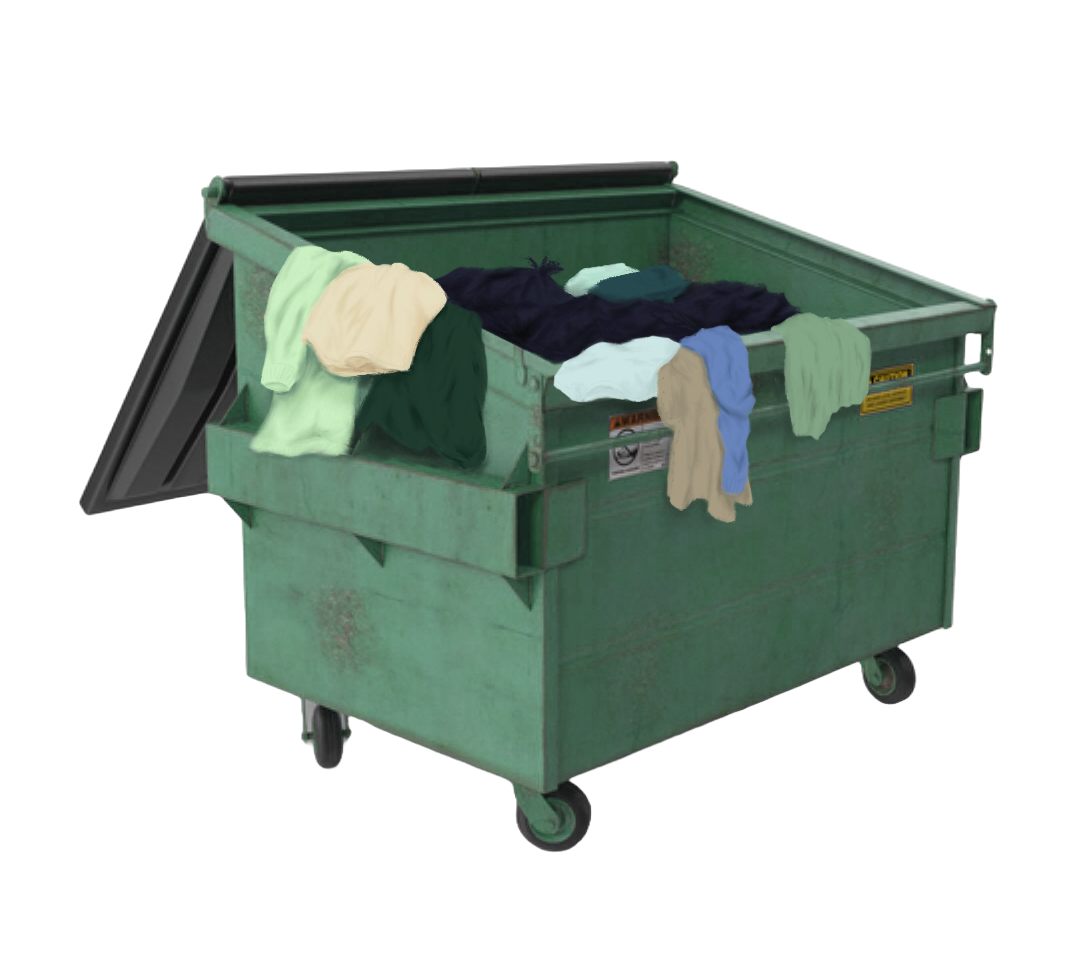While scrolling through TikTok, you might come across a clip of a fashion influencer showing off her old clothes, clearly marked with stains or wrinkled. She tells viewers that despite these flaws, she continues wearing these pieces. This is the general idea of the “underconsumption core” trend that has recently gone viral on social media to promote sustainability. In fact, half of MVHS students admit to having purchased something because a social media creator was promoting it. Because of this, the trend aims to convince people to cut back on unnecessary purchases, reducing waste. Smaller creators were inspired to start “underconsumption core” because of the toll that overconsumption, which was caused by fast fashion and large influencers, takes on the environment.
While the intentions behind the trend are good, a closer look proves that the presence of “underconsumption core” on social media presents challenges along with potential benefits. As the trend took off, a subtrend emerged: an influx of luxury minimalism, the idea that purchasing and keeping high-quality items is better than constantly replacing cheap ones. Fast fashion companies have thrived because of their infamously affordable prices, but the products are of poor quality, leading to short lifespans and constant repurchasing. Twenty eight percent of MVHS students have bought from fast fashion brands before, and while this isn’t ideal, luxury minimalism isn’t as realistic or sustainable as the media cuts it out to be either. With the continuously changing cycle of microtrends on social media, luxury items won’t fit into those styles forever.
Minimalism advocates for few products for necessity only. However, an astonishing 84% of students in the MVHS community purchase non-necessity items every month or less. While donating can alleviate our impact on the environment by reducing consumption waste, throwing things away still contributes to environmental damage — if the objects don’t break down properly, they produce dangerous microplastics. When social media influencers see this trend as an opportunity to throw away products to promote a falsely minimalistic lifestyle, sustainability is compromised. As trendsetters and content creators, these users are encouraging wasteful behaviors. Throwing away products for an aesthetic change is a quick fix to the temporary issue of keeping up with trends but neglects sustainability in the long run.
Moreover, “underconsumption core” is restrictive because it could convince us that we don’t need something enough to spend money on it. Douglas Boneparth, a certified financial planner and member of CNBC’s Financial Advisor Council, said, “If you get too caught up in saving income by sacrificing current comforts, are you basically sucking the joy out of things? Are you not allowing yourself to actually partake in some of the more fun or frilly things in life?” He asserts that if people take minimalism too far, they could limit their spending so that they no longer find joy in smaller discretionary spending.
If you aren’t willing to spend money to make your life more enjoyable now, what will make you want to spend that money later on? Beyond that, if you let “underconsumption core” become a larger force that controls your life, by devoting all your attention to keeping up with a trend and being too frugal to spend money, you could miss out on valuable experiences. Ultimately, “the key word in personal finance is personal,” Boneparth said. You should spend your money the way you want to, and not keep it stashed away just because social media and influencers told you to.
Revenge spending, a result of minimalism and feeling restricted, surfaced after COVID-19. According to the Corporate Finance Institute, those who felt denied of purchases spent an excessive amount of money making up for what they believed they were deprived of. However, Solitaire Townsend, a sustainability expert and co-founder of the change agency Futerra, said, “Most of us who are following influencers really want them to help us make sustainable choices. We want them to model these behaviors,” which contributed to the rise of creators de-influencing people from buying into certain products and behaviors.
Even though survey results indicate that consumption at MVHS is relatively under control, we still need to recognize these prevalent issues and call for a healthy balance between the two extremities of overconsumption and underconsumption. Some alternatives to underconsumption include thrifting, which is more affordable and won’t add another garment to the world, and investing in higher-end items that last longer, which could be more expensive but don’t necessarily have to be “luxurious.” Overconsumption alternatives can include mending old items instead of buying new ones altogether and keeping how much you spend on fast fashion in check.
Essentially, by reducing, reusing and recycling, we can find a sustainable solution by being mindful of the environment. While this trend is seemingly effective because it attempts to convey messages of underconsumerism to counter our previously very overconsumerist lifestyles, “underconsumption core” is problematic as a whole because of its implications on the media, the environment and ourselves.










